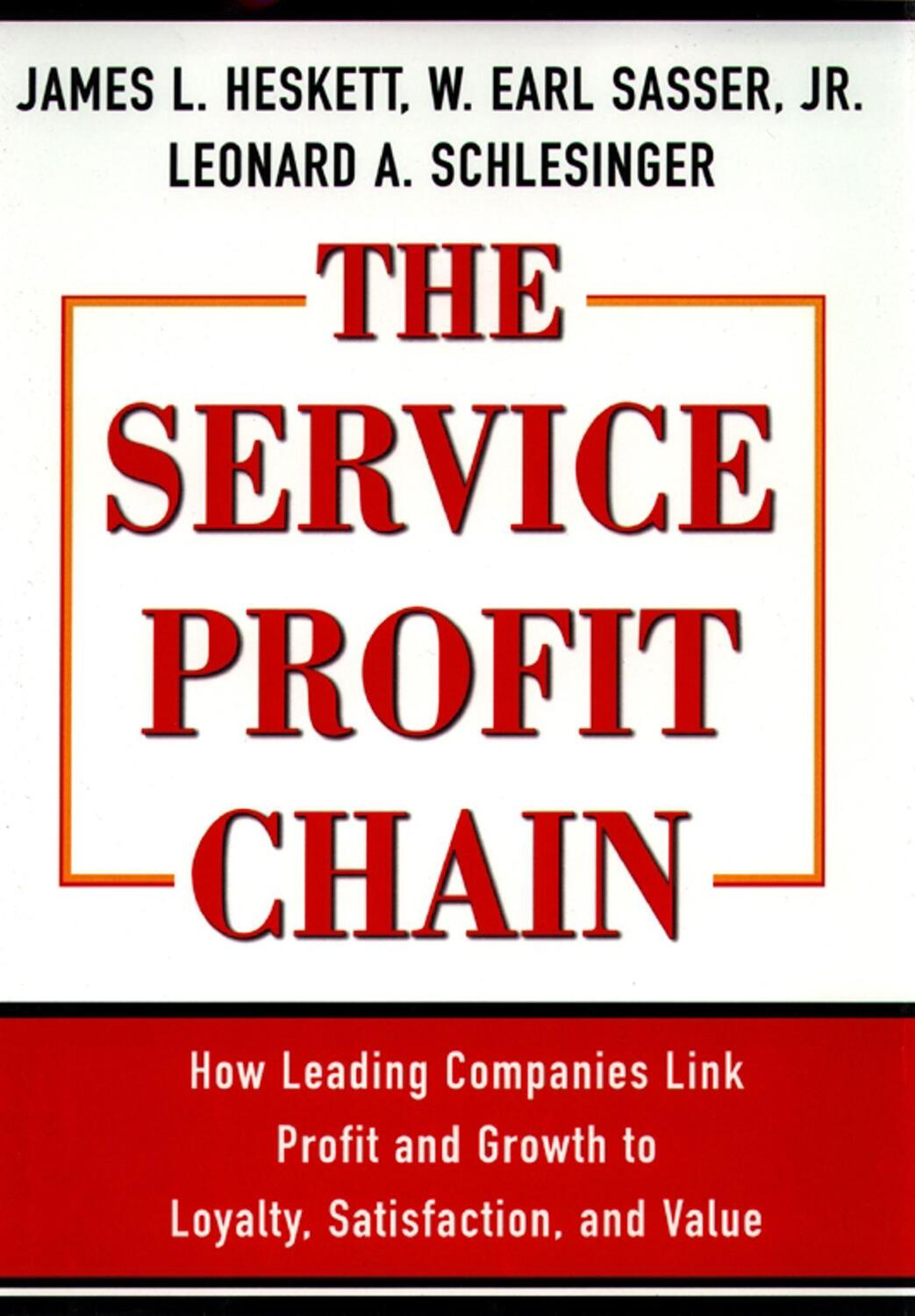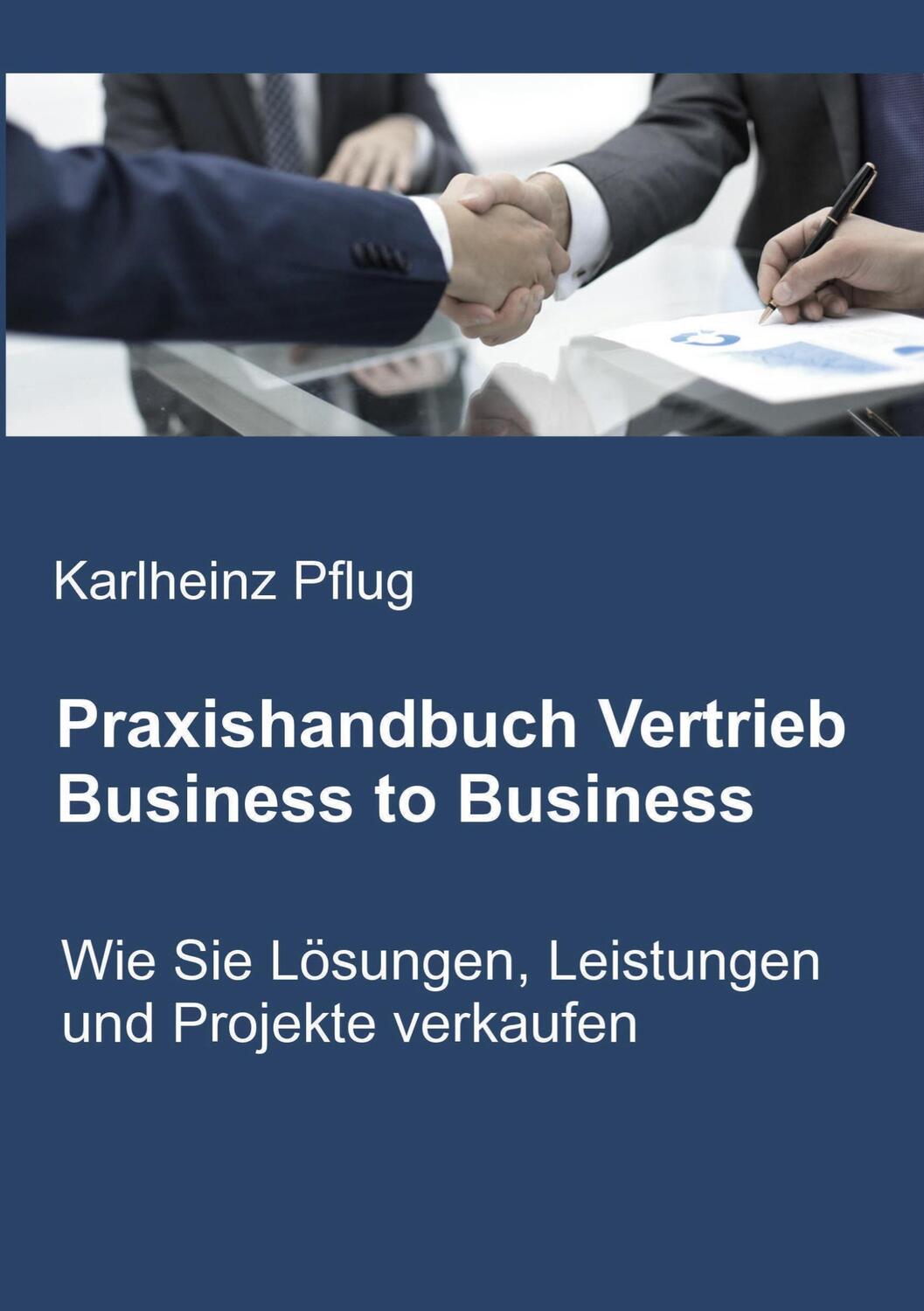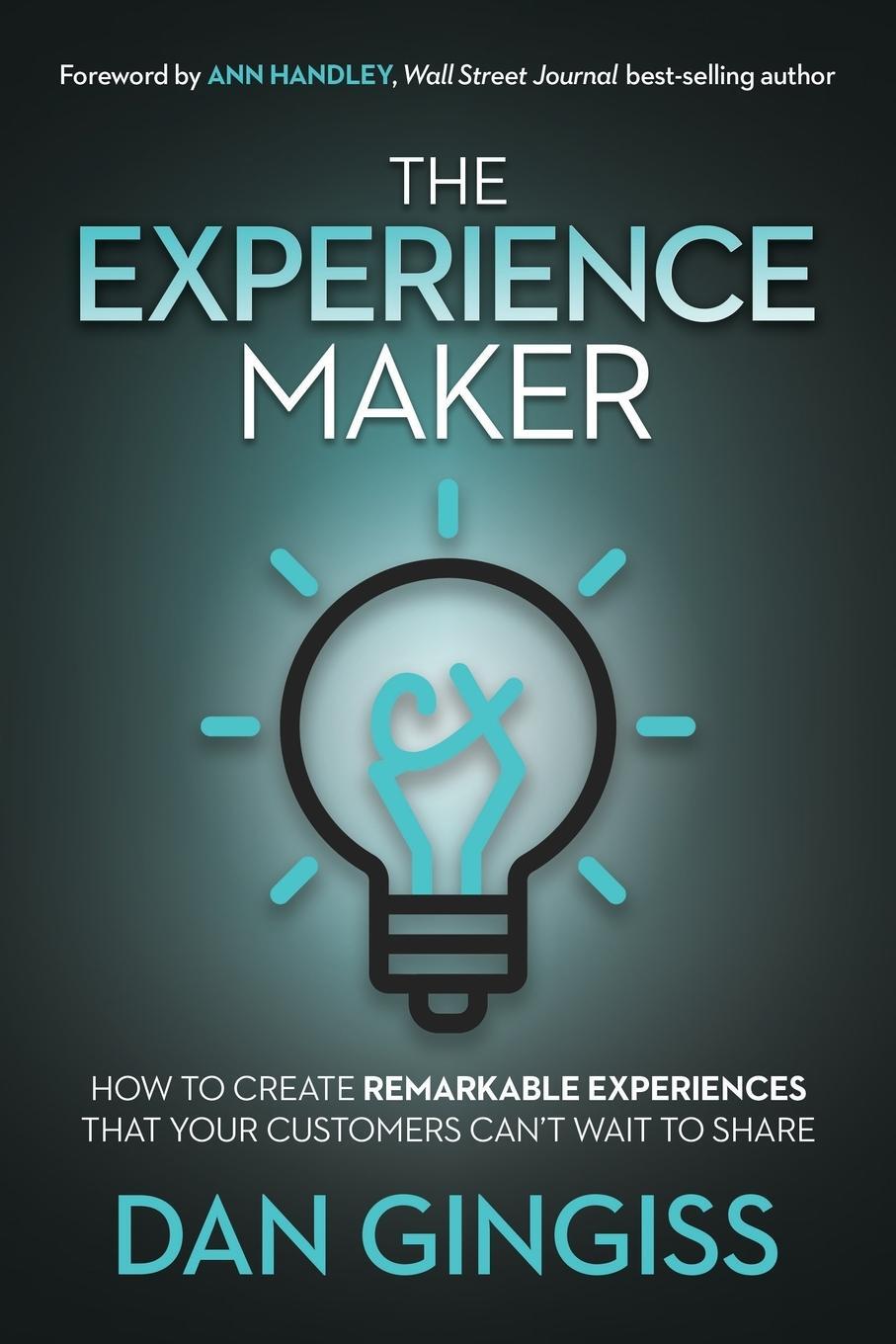Dekorationsartikel gehören nicht zum Leistungsumfang.
Sprache:
Englisch
33,50 €*
Versandkostenfrei per Post / DHL
Aktuell nicht verfügbar
Kategorien:
Beschreibung
Directly linking profit and growth not only to customer loyalty and satisfaction but to employee productivity, the authors present a step-by-step action plan for managing, marketing, hiring, delivering services, and assessing results. In-depth case examples demonstrate how the best companies have managed in this regard. 50 line drawings.
Directly linking profit and growth not only to customer loyalty and satisfaction but to employee productivity, the authors present a step-by-step action plan for managing, marketing, hiring, delivering services, and assessing results. In-depth case examples demonstrate how the best companies have managed in this regard. 50 line drawings.
Über den Autor
James L. Heskett, is the UPS Foundation Professor of Business Logistics at the Harvard Business School. He is also co-author of Service Breakthroughs, The Service Management Course, and Corporate Culture and Performance.
Inhaltsverzeichnis
Contents
Preface
PART I: THE SERVICE PROFIT CHAIN A RATIONALE FOR EXCELLENCE
1. Setting the Record Straight
A World of Misleading Advice
Too Much Advice out of Context
The Tyranny of the Tradeoff
Emphasis on Symptoms vs. Causes
The "Trivialization" of Service
Fixation on Service Process Quality
The Service Profit Chain and Our Search for Evidence
Heskett and the Strategic Service Vision
Sasser and Customer Loyalty
Schlesinger and Determinants of Employee and Customer Loyalty
The Service Profit Chain
The Centrality of Value
Quality as One Element of Value
Price
Results, Costs, Price, Value, and Profit
Relationship to Service Profit Chain
What Difference Does It Make?
Spreading the Word
2. Capitalizing on the Service Profit Chain
The Service Profit Chain
Managing for Results at Southwest Airlines and American Express
Profit and Growth Are Linked to Customer Loyalty
Customer Loyalty Is Linked to Customer Satisfaction
Customer Satisfaction Is Linked to Service Value
Service Value Is Linked to Employee Productivity
Employee Productivity Is Linked to Loyalty
Employee Loyalty Is Linked to Employee Satisfaction
Employee Satisfaction Is Linked to Internal Quality of Work Life
Comprehensively Relating Links in the Chain
Implications of the Service Profit Chain for Management
Measuring Across Operating Units
Communicating Results of the Self-Appraisal
Developing a "Balanced Scorecard"
Designing Efforts to Enhance Performance
Tying Recognition and Rewards to Measures
Communicating Results
Encouraging Internal "Best Practice" Exchanges
Questions for Management
Getting on with the Job: An Important Caveat
3. Managing by the Customer Value Equation
The Customer Value Equation
Results Produced for Customers
Process Quality
Price and Acquisition Costs
Customer Value Equation Relationships
Managing by the Customer Value Equation: What It Requires
USAA
British Airways
Requirements of Those Who Manage by the Customer Value Equation
Linking the Strategic Service Vision and the Service Profit Chain
Questions for Management
PART II: BUILDING PROFIT CHAIN CAPABILITY
4. Rethinking Marketing: Building Customer Loyalty
Defining the "New" Marketing: Adding the Three Rs to the Four Ps
Estimating the Lifetime Value of a Customer
Retention
Related Sales of New Products and Services
Referrals
Managing by the Three Rs
Measuring and Communicating the Lifetime Value of Customers
Identifying, Creating, and Enhancing Listening Posts
Recognizing and Creating Incentives to Build Customer Loyalty
Utilizing Customer Defections as Learning Opportunities Potential-Based Marketing
Identifying Share of Loyal Customers
Calculating Economic Impact of Customer Behavior Change
Lengthening Customer Relationships
Overall Impact of Potential-based Marketing
Implementing a Potential-based Marketing Effort
Mining Customer Data to Achieve Mass Customization
Achieving Mass Customization on a "Vertical" Data base
Achieving Mass Customization on a "Horizontal" Data base
Organizational Implications of the New Marketing
Questions for Management
5. Attaining Total Customer Satisfaction: Not Whether but When
The Xerox Experience
The Total Customer Satisfaction Imperative
Relationship of Customer Satisfaction and Loyalty
Relationship of Customer Satisfaction and Profitability
Total Satisfaction for Captive Customers
The Importance of Focus
The Tyranny of Averages
Satisfying Targeted Segments
The Ultimate Source of Focus: Affinity Groups
Measuring Customer Satisfaction and Loyalty
Customer Surveys
Customer Feedback
Marketing Research
Feedback from Frontline Personnel
Complementarity of Methods
Addressing Customer Satisfaction at the Limits: Apostles and Terrorists
The Economics of the Extreme
Investing in Existing versus New Customers
Creating Terrorists as a By-Product of Focus
Meanwhile, Back at Xerox
Questions for Management
Understanding Determinants of Customer Satisfaction
6. Managing the Customer-Employee "Satisfaction Mirror"
The Service Encounter
Evidence of the "Satisfaction Mirror"
Why the Satisfaction Mirror Occurs
Preventing Cracks in the Mirror
From Service Encounter to Relationship
Factors Creating the Successful Service Encounter
Achieving Consistency in Service Encounters
Enlisting the Customer in Relationship Building
Engineering an Organization for Customer Relationships
Developing the Service Relationship Triangle
Identifying Relationship-Critical Jobs
Dedicated Servers or Not?
Service Teams or Not?
Questions for Management
7. Building a Cycle of Capability
Frontline Frustration
Capability Defined
Hiring for Attitudes First, Skills Second
The Bugs Burger Method
Selection by "Life Themes"
Substituting Self-Selection for Selection
Involving Customers in the Process
Serving Customers Who Qualify
Designing Training as Both Ends and Means
Providing Latitude and Limits
The Traditional View
The Nontraditional View
Investing in Support Systems
Information and Communication Technology
Facilities
Methods and Materials
Field Quality Control "Safety Nets"
Service Guarantees
Latitude to Fire Customers
Providing Consistent Reward and Recognition
Fitting the Elements Together
Questions for Management
Concluding Comments
8. Developing Processes That Deliver Value
Basic Tenets of Process Design That Yield Value
The World's Best Hospital
The World's Best Dinner Show Value
America's First Deming Prize Winner
Formation of Quality Improvement Teams
Development of The Process
Policy Deployment
Quality in Daily Work
Important Techniques for Process Improvement
Service Mapping
Pareto Analyses
Cause-and-Effect (Fishbone) Diagramming
Other Process Steps
Translating Techniques into Results
Value Enhancement versus Quality Improvement Process
Questions for Management
9. Designing Service Delivery Systems That Drive Quality, Productivity, and Value
Developing Single-Facility Service Delivery Systems
Planning System Designs for the Right Amount of Employee Latitude
Controlling Customer Behavior
The Ultimate Customer Control Strategy: Self-Service
Managing Information Support Systems to Enhance Customer Loyalty and Sales
Providing Process "Visibility"
Preventing Service Errors
Developing and Managing Multisite Networks
Network Characteristics
Factors in Network Design
Degree of Support for Operating Strategy
Need for Interconnectedness
Need for Standardization
Latitude Allowed Site Managers: Preserving the Core
Delivering Services Globally
The Target Market and the Need for Customization
"Total Experience" Services
Culturally Sensitive Services
Incorporating Franchising into the Strategy
"Employing" Franchisees
"Enfranchising" Employees
Questions for Management
10. Attaining Total Customer Satisfaction: Doing Things Right the Second Time
Doing It Right the First and Second Time
Getting Customers to Complain: The British Airways Experience
The Problem
Some Responses
External and Internal Service Contracting
Customer Service Contracting
Internal Service Contracting
Supplier Service Contracting
Service Guarantees
Questions in Guarantee Design
What's the Primary Purpose?
Internal Guarantees
Impact on Suppliers
The Economics of Service Guarantees
Putting Guarantees in Context
Service Recovery: A Case for Capability
The Service Recovery Payoff
Questions for Management
11. Measuring for Effective Management
Estimating the Lifetime Value of a Customer
Fitting Measurement to the Business
Fitting Measurement to Purpose: Relevance
The Xerox Experience
The AT&T Universal Card Experience
Taking Process into Account
Determining the Form in Which Results Will Be Transmitted
Other Criteria for Evaluating Measures and Methods
Designing the Balanced Scorecard
Questions for Management
PART III: PUTTING IT ALL TOGETHER
12. Reengineering the Service Organization for Capability: Gains and Pains
The Theory of Managing Change
Organization Reengineering without a Crisis
John Martin and Taco Bell
Actions
Gains
Pains
William Bratton and the NYPD
Actions
Gains
Pains
Arthur Martinez and Sears
Actions
Gains
Pains
Putting Organization Reengineering in Context
Applying Cosmetics
Picking Movers and Shakers
Creating a Sense of Urgency
Choosing the Theme and Vehicle
Preparing People
Getting the Facts Straight and Fast
Restructuring the Organization
Undertaking New Initiatives
Widening the Competitive...
Preface
PART I: THE SERVICE PROFIT CHAIN A RATIONALE FOR EXCELLENCE
1. Setting the Record Straight
A World of Misleading Advice
Too Much Advice out of Context
The Tyranny of the Tradeoff
Emphasis on Symptoms vs. Causes
The "Trivialization" of Service
Fixation on Service Process Quality
The Service Profit Chain and Our Search for Evidence
Heskett and the Strategic Service Vision
Sasser and Customer Loyalty
Schlesinger and Determinants of Employee and Customer Loyalty
The Service Profit Chain
The Centrality of Value
Quality as One Element of Value
Price
Results, Costs, Price, Value, and Profit
Relationship to Service Profit Chain
What Difference Does It Make?
Spreading the Word
2. Capitalizing on the Service Profit Chain
The Service Profit Chain
Managing for Results at Southwest Airlines and American Express
Profit and Growth Are Linked to Customer Loyalty
Customer Loyalty Is Linked to Customer Satisfaction
Customer Satisfaction Is Linked to Service Value
Service Value Is Linked to Employee Productivity
Employee Productivity Is Linked to Loyalty
Employee Loyalty Is Linked to Employee Satisfaction
Employee Satisfaction Is Linked to Internal Quality of Work Life
Comprehensively Relating Links in the Chain
Implications of the Service Profit Chain for Management
Measuring Across Operating Units
Communicating Results of the Self-Appraisal
Developing a "Balanced Scorecard"
Designing Efforts to Enhance Performance
Tying Recognition and Rewards to Measures
Communicating Results
Encouraging Internal "Best Practice" Exchanges
Questions for Management
Getting on with the Job: An Important Caveat
3. Managing by the Customer Value Equation
The Customer Value Equation
Results Produced for Customers
Process Quality
Price and Acquisition Costs
Customer Value Equation Relationships
Managing by the Customer Value Equation: What It Requires
USAA
British Airways
Requirements of Those Who Manage by the Customer Value Equation
Linking the Strategic Service Vision and the Service Profit Chain
Questions for Management
PART II: BUILDING PROFIT CHAIN CAPABILITY
4. Rethinking Marketing: Building Customer Loyalty
Defining the "New" Marketing: Adding the Three Rs to the Four Ps
Estimating the Lifetime Value of a Customer
Retention
Related Sales of New Products and Services
Referrals
Managing by the Three Rs
Measuring and Communicating the Lifetime Value of Customers
Identifying, Creating, and Enhancing Listening Posts
Recognizing and Creating Incentives to Build Customer Loyalty
Utilizing Customer Defections as Learning Opportunities Potential-Based Marketing
Identifying Share of Loyal Customers
Calculating Economic Impact of Customer Behavior Change
Lengthening Customer Relationships
Overall Impact of Potential-based Marketing
Implementing a Potential-based Marketing Effort
Mining Customer Data to Achieve Mass Customization
Achieving Mass Customization on a "Vertical" Data base
Achieving Mass Customization on a "Horizontal" Data base
Organizational Implications of the New Marketing
Questions for Management
5. Attaining Total Customer Satisfaction: Not Whether but When
The Xerox Experience
The Total Customer Satisfaction Imperative
Relationship of Customer Satisfaction and Loyalty
Relationship of Customer Satisfaction and Profitability
Total Satisfaction for Captive Customers
The Importance of Focus
The Tyranny of Averages
Satisfying Targeted Segments
The Ultimate Source of Focus: Affinity Groups
Measuring Customer Satisfaction and Loyalty
Customer Surveys
Customer Feedback
Marketing Research
Feedback from Frontline Personnel
Complementarity of Methods
Addressing Customer Satisfaction at the Limits: Apostles and Terrorists
The Economics of the Extreme
Investing in Existing versus New Customers
Creating Terrorists as a By-Product of Focus
Meanwhile, Back at Xerox
Questions for Management
Understanding Determinants of Customer Satisfaction
6. Managing the Customer-Employee "Satisfaction Mirror"
The Service Encounter
Evidence of the "Satisfaction Mirror"
Why the Satisfaction Mirror Occurs
Preventing Cracks in the Mirror
From Service Encounter to Relationship
Factors Creating the Successful Service Encounter
Achieving Consistency in Service Encounters
Enlisting the Customer in Relationship Building
Engineering an Organization for Customer Relationships
Developing the Service Relationship Triangle
Identifying Relationship-Critical Jobs
Dedicated Servers or Not?
Service Teams or Not?
Questions for Management
7. Building a Cycle of Capability
Frontline Frustration
Capability Defined
Hiring for Attitudes First, Skills Second
The Bugs Burger Method
Selection by "Life Themes"
Substituting Self-Selection for Selection
Involving Customers in the Process
Serving Customers Who Qualify
Designing Training as Both Ends and Means
Providing Latitude and Limits
The Traditional View
The Nontraditional View
Investing in Support Systems
Information and Communication Technology
Facilities
Methods and Materials
Field Quality Control "Safety Nets"
Service Guarantees
Latitude to Fire Customers
Providing Consistent Reward and Recognition
Fitting the Elements Together
Questions for Management
Concluding Comments
8. Developing Processes That Deliver Value
Basic Tenets of Process Design That Yield Value
The World's Best Hospital
The World's Best Dinner Show Value
America's First Deming Prize Winner
Formation of Quality Improvement Teams
Development of The Process
Policy Deployment
Quality in Daily Work
Important Techniques for Process Improvement
Service Mapping
Pareto Analyses
Cause-and-Effect (Fishbone) Diagramming
Other Process Steps
Translating Techniques into Results
Value Enhancement versus Quality Improvement Process
Questions for Management
9. Designing Service Delivery Systems That Drive Quality, Productivity, and Value
Developing Single-Facility Service Delivery Systems
Planning System Designs for the Right Amount of Employee Latitude
Controlling Customer Behavior
The Ultimate Customer Control Strategy: Self-Service
Managing Information Support Systems to Enhance Customer Loyalty and Sales
Providing Process "Visibility"
Preventing Service Errors
Developing and Managing Multisite Networks
Network Characteristics
Factors in Network Design
Degree of Support for Operating Strategy
Need for Interconnectedness
Need for Standardization
Latitude Allowed Site Managers: Preserving the Core
Delivering Services Globally
The Target Market and the Need for Customization
"Total Experience" Services
Culturally Sensitive Services
Incorporating Franchising into the Strategy
"Employing" Franchisees
"Enfranchising" Employees
Questions for Management
10. Attaining Total Customer Satisfaction: Doing Things Right the Second Time
Doing It Right the First and Second Time
Getting Customers to Complain: The British Airways Experience
The Problem
Some Responses
External and Internal Service Contracting
Customer Service Contracting
Internal Service Contracting
Supplier Service Contracting
Service Guarantees
Questions in Guarantee Design
What's the Primary Purpose?
Internal Guarantees
Impact on Suppliers
The Economics of Service Guarantees
Putting Guarantees in Context
Service Recovery: A Case for Capability
The Service Recovery Payoff
Questions for Management
11. Measuring for Effective Management
Estimating the Lifetime Value of a Customer
Fitting Measurement to the Business
Fitting Measurement to Purpose: Relevance
The Xerox Experience
The AT&T Universal Card Experience
Taking Process into Account
Determining the Form in Which Results Will Be Transmitted
Other Criteria for Evaluating Measures and Methods
Designing the Balanced Scorecard
Questions for Management
PART III: PUTTING IT ALL TOGETHER
12. Reengineering the Service Organization for Capability: Gains and Pains
The Theory of Managing Change
Organization Reengineering without a Crisis
John Martin and Taco Bell
Actions
Gains
Pains
William Bratton and the NYPD
Actions
Gains
Pains
Arthur Martinez and Sears
Actions
Gains
Pains
Putting Organization Reengineering in Context
Applying Cosmetics
Picking Movers and Shakers
Creating a Sense of Urgency
Choosing the Theme and Vehicle
Preparing People
Getting the Facts Straight and Fast
Restructuring the Organization
Undertaking New Initiatives
Widening the Competitive...
Details
| Erscheinungsjahr: | 1997 |
|---|---|
| Fachbereich: | Management |
| Genre: | Wirtschaft |
| Rubrik: | Recht & Wirtschaft |
| Medium: | Buch |
| Seiten: | 320 |
| ISBN-13: | 9780684832562 |
| ISBN-10: | 0684832569 |
| Sprache: | Englisch |
| Einband: | Gebunden |
| Autor: |
Sasser, W. Earl
Schlesinger, Leonard A. Heskett, James L. |
| Auflage: | New |
| Hersteller: | Simon & Schuster |
| Maße: | 156 x 237 x 30 mm |
| Von/Mit: | W. Earl Sasser (u. a.) |
| Erscheinungsdatum: | 04.1997 |
| Gewicht: | 0,496 kg |
Über den Autor
James L. Heskett, is the UPS Foundation Professor of Business Logistics at the Harvard Business School. He is also co-author of Service Breakthroughs, The Service Management Course, and Corporate Culture and Performance.
Inhaltsverzeichnis
Contents
Preface
PART I: THE SERVICE PROFIT CHAIN A RATIONALE FOR EXCELLENCE
1. Setting the Record Straight
A World of Misleading Advice
Too Much Advice out of Context
The Tyranny of the Tradeoff
Emphasis on Symptoms vs. Causes
The "Trivialization" of Service
Fixation on Service Process Quality
The Service Profit Chain and Our Search for Evidence
Heskett and the Strategic Service Vision
Sasser and Customer Loyalty
Schlesinger and Determinants of Employee and Customer Loyalty
The Service Profit Chain
The Centrality of Value
Quality as One Element of Value
Price
Results, Costs, Price, Value, and Profit
Relationship to Service Profit Chain
What Difference Does It Make?
Spreading the Word
2. Capitalizing on the Service Profit Chain
The Service Profit Chain
Managing for Results at Southwest Airlines and American Express
Profit and Growth Are Linked to Customer Loyalty
Customer Loyalty Is Linked to Customer Satisfaction
Customer Satisfaction Is Linked to Service Value
Service Value Is Linked to Employee Productivity
Employee Productivity Is Linked to Loyalty
Employee Loyalty Is Linked to Employee Satisfaction
Employee Satisfaction Is Linked to Internal Quality of Work Life
Comprehensively Relating Links in the Chain
Implications of the Service Profit Chain for Management
Measuring Across Operating Units
Communicating Results of the Self-Appraisal
Developing a "Balanced Scorecard"
Designing Efforts to Enhance Performance
Tying Recognition and Rewards to Measures
Communicating Results
Encouraging Internal "Best Practice" Exchanges
Questions for Management
Getting on with the Job: An Important Caveat
3. Managing by the Customer Value Equation
The Customer Value Equation
Results Produced for Customers
Process Quality
Price and Acquisition Costs
Customer Value Equation Relationships
Managing by the Customer Value Equation: What It Requires
USAA
British Airways
Requirements of Those Who Manage by the Customer Value Equation
Linking the Strategic Service Vision and the Service Profit Chain
Questions for Management
PART II: BUILDING PROFIT CHAIN CAPABILITY
4. Rethinking Marketing: Building Customer Loyalty
Defining the "New" Marketing: Adding the Three Rs to the Four Ps
Estimating the Lifetime Value of a Customer
Retention
Related Sales of New Products and Services
Referrals
Managing by the Three Rs
Measuring and Communicating the Lifetime Value of Customers
Identifying, Creating, and Enhancing Listening Posts
Recognizing and Creating Incentives to Build Customer Loyalty
Utilizing Customer Defections as Learning Opportunities Potential-Based Marketing
Identifying Share of Loyal Customers
Calculating Economic Impact of Customer Behavior Change
Lengthening Customer Relationships
Overall Impact of Potential-based Marketing
Implementing a Potential-based Marketing Effort
Mining Customer Data to Achieve Mass Customization
Achieving Mass Customization on a "Vertical" Data base
Achieving Mass Customization on a "Horizontal" Data base
Organizational Implications of the New Marketing
Questions for Management
5. Attaining Total Customer Satisfaction: Not Whether but When
The Xerox Experience
The Total Customer Satisfaction Imperative
Relationship of Customer Satisfaction and Loyalty
Relationship of Customer Satisfaction and Profitability
Total Satisfaction for Captive Customers
The Importance of Focus
The Tyranny of Averages
Satisfying Targeted Segments
The Ultimate Source of Focus: Affinity Groups
Measuring Customer Satisfaction and Loyalty
Customer Surveys
Customer Feedback
Marketing Research
Feedback from Frontline Personnel
Complementarity of Methods
Addressing Customer Satisfaction at the Limits: Apostles and Terrorists
The Economics of the Extreme
Investing in Existing versus New Customers
Creating Terrorists as a By-Product of Focus
Meanwhile, Back at Xerox
Questions for Management
Understanding Determinants of Customer Satisfaction
6. Managing the Customer-Employee "Satisfaction Mirror"
The Service Encounter
Evidence of the "Satisfaction Mirror"
Why the Satisfaction Mirror Occurs
Preventing Cracks in the Mirror
From Service Encounter to Relationship
Factors Creating the Successful Service Encounter
Achieving Consistency in Service Encounters
Enlisting the Customer in Relationship Building
Engineering an Organization for Customer Relationships
Developing the Service Relationship Triangle
Identifying Relationship-Critical Jobs
Dedicated Servers or Not?
Service Teams or Not?
Questions for Management
7. Building a Cycle of Capability
Frontline Frustration
Capability Defined
Hiring for Attitudes First, Skills Second
The Bugs Burger Method
Selection by "Life Themes"
Substituting Self-Selection for Selection
Involving Customers in the Process
Serving Customers Who Qualify
Designing Training as Both Ends and Means
Providing Latitude and Limits
The Traditional View
The Nontraditional View
Investing in Support Systems
Information and Communication Technology
Facilities
Methods and Materials
Field Quality Control "Safety Nets"
Service Guarantees
Latitude to Fire Customers
Providing Consistent Reward and Recognition
Fitting the Elements Together
Questions for Management
Concluding Comments
8. Developing Processes That Deliver Value
Basic Tenets of Process Design That Yield Value
The World's Best Hospital
The World's Best Dinner Show Value
America's First Deming Prize Winner
Formation of Quality Improvement Teams
Development of The Process
Policy Deployment
Quality in Daily Work
Important Techniques for Process Improvement
Service Mapping
Pareto Analyses
Cause-and-Effect (Fishbone) Diagramming
Other Process Steps
Translating Techniques into Results
Value Enhancement versus Quality Improvement Process
Questions for Management
9. Designing Service Delivery Systems That Drive Quality, Productivity, and Value
Developing Single-Facility Service Delivery Systems
Planning System Designs for the Right Amount of Employee Latitude
Controlling Customer Behavior
The Ultimate Customer Control Strategy: Self-Service
Managing Information Support Systems to Enhance Customer Loyalty and Sales
Providing Process "Visibility"
Preventing Service Errors
Developing and Managing Multisite Networks
Network Characteristics
Factors in Network Design
Degree of Support for Operating Strategy
Need for Interconnectedness
Need for Standardization
Latitude Allowed Site Managers: Preserving the Core
Delivering Services Globally
The Target Market and the Need for Customization
"Total Experience" Services
Culturally Sensitive Services
Incorporating Franchising into the Strategy
"Employing" Franchisees
"Enfranchising" Employees
Questions for Management
10. Attaining Total Customer Satisfaction: Doing Things Right the Second Time
Doing It Right the First and Second Time
Getting Customers to Complain: The British Airways Experience
The Problem
Some Responses
External and Internal Service Contracting
Customer Service Contracting
Internal Service Contracting
Supplier Service Contracting
Service Guarantees
Questions in Guarantee Design
What's the Primary Purpose?
Internal Guarantees
Impact on Suppliers
The Economics of Service Guarantees
Putting Guarantees in Context
Service Recovery: A Case for Capability
The Service Recovery Payoff
Questions for Management
11. Measuring for Effective Management
Estimating the Lifetime Value of a Customer
Fitting Measurement to the Business
Fitting Measurement to Purpose: Relevance
The Xerox Experience
The AT&T Universal Card Experience
Taking Process into Account
Determining the Form in Which Results Will Be Transmitted
Other Criteria for Evaluating Measures and Methods
Designing the Balanced Scorecard
Questions for Management
PART III: PUTTING IT ALL TOGETHER
12. Reengineering the Service Organization for Capability: Gains and Pains
The Theory of Managing Change
Organization Reengineering without a Crisis
John Martin and Taco Bell
Actions
Gains
Pains
William Bratton and the NYPD
Actions
Gains
Pains
Arthur Martinez and Sears
Actions
Gains
Pains
Putting Organization Reengineering in Context
Applying Cosmetics
Picking Movers and Shakers
Creating a Sense of Urgency
Choosing the Theme and Vehicle
Preparing People
Getting the Facts Straight and Fast
Restructuring the Organization
Undertaking New Initiatives
Widening the Competitive...
Preface
PART I: THE SERVICE PROFIT CHAIN A RATIONALE FOR EXCELLENCE
1. Setting the Record Straight
A World of Misleading Advice
Too Much Advice out of Context
The Tyranny of the Tradeoff
Emphasis on Symptoms vs. Causes
The "Trivialization" of Service
Fixation on Service Process Quality
The Service Profit Chain and Our Search for Evidence
Heskett and the Strategic Service Vision
Sasser and Customer Loyalty
Schlesinger and Determinants of Employee and Customer Loyalty
The Service Profit Chain
The Centrality of Value
Quality as One Element of Value
Price
Results, Costs, Price, Value, and Profit
Relationship to Service Profit Chain
What Difference Does It Make?
Spreading the Word
2. Capitalizing on the Service Profit Chain
The Service Profit Chain
Managing for Results at Southwest Airlines and American Express
Profit and Growth Are Linked to Customer Loyalty
Customer Loyalty Is Linked to Customer Satisfaction
Customer Satisfaction Is Linked to Service Value
Service Value Is Linked to Employee Productivity
Employee Productivity Is Linked to Loyalty
Employee Loyalty Is Linked to Employee Satisfaction
Employee Satisfaction Is Linked to Internal Quality of Work Life
Comprehensively Relating Links in the Chain
Implications of the Service Profit Chain for Management
Measuring Across Operating Units
Communicating Results of the Self-Appraisal
Developing a "Balanced Scorecard"
Designing Efforts to Enhance Performance
Tying Recognition and Rewards to Measures
Communicating Results
Encouraging Internal "Best Practice" Exchanges
Questions for Management
Getting on with the Job: An Important Caveat
3. Managing by the Customer Value Equation
The Customer Value Equation
Results Produced for Customers
Process Quality
Price and Acquisition Costs
Customer Value Equation Relationships
Managing by the Customer Value Equation: What It Requires
USAA
British Airways
Requirements of Those Who Manage by the Customer Value Equation
Linking the Strategic Service Vision and the Service Profit Chain
Questions for Management
PART II: BUILDING PROFIT CHAIN CAPABILITY
4. Rethinking Marketing: Building Customer Loyalty
Defining the "New" Marketing: Adding the Three Rs to the Four Ps
Estimating the Lifetime Value of a Customer
Retention
Related Sales of New Products and Services
Referrals
Managing by the Three Rs
Measuring and Communicating the Lifetime Value of Customers
Identifying, Creating, and Enhancing Listening Posts
Recognizing and Creating Incentives to Build Customer Loyalty
Utilizing Customer Defections as Learning Opportunities Potential-Based Marketing
Identifying Share of Loyal Customers
Calculating Economic Impact of Customer Behavior Change
Lengthening Customer Relationships
Overall Impact of Potential-based Marketing
Implementing a Potential-based Marketing Effort
Mining Customer Data to Achieve Mass Customization
Achieving Mass Customization on a "Vertical" Data base
Achieving Mass Customization on a "Horizontal" Data base
Organizational Implications of the New Marketing
Questions for Management
5. Attaining Total Customer Satisfaction: Not Whether but When
The Xerox Experience
The Total Customer Satisfaction Imperative
Relationship of Customer Satisfaction and Loyalty
Relationship of Customer Satisfaction and Profitability
Total Satisfaction for Captive Customers
The Importance of Focus
The Tyranny of Averages
Satisfying Targeted Segments
The Ultimate Source of Focus: Affinity Groups
Measuring Customer Satisfaction and Loyalty
Customer Surveys
Customer Feedback
Marketing Research
Feedback from Frontline Personnel
Complementarity of Methods
Addressing Customer Satisfaction at the Limits: Apostles and Terrorists
The Economics of the Extreme
Investing in Existing versus New Customers
Creating Terrorists as a By-Product of Focus
Meanwhile, Back at Xerox
Questions for Management
Understanding Determinants of Customer Satisfaction
6. Managing the Customer-Employee "Satisfaction Mirror"
The Service Encounter
Evidence of the "Satisfaction Mirror"
Why the Satisfaction Mirror Occurs
Preventing Cracks in the Mirror
From Service Encounter to Relationship
Factors Creating the Successful Service Encounter
Achieving Consistency in Service Encounters
Enlisting the Customer in Relationship Building
Engineering an Organization for Customer Relationships
Developing the Service Relationship Triangle
Identifying Relationship-Critical Jobs
Dedicated Servers or Not?
Service Teams or Not?
Questions for Management
7. Building a Cycle of Capability
Frontline Frustration
Capability Defined
Hiring for Attitudes First, Skills Second
The Bugs Burger Method
Selection by "Life Themes"
Substituting Self-Selection for Selection
Involving Customers in the Process
Serving Customers Who Qualify
Designing Training as Both Ends and Means
Providing Latitude and Limits
The Traditional View
The Nontraditional View
Investing in Support Systems
Information and Communication Technology
Facilities
Methods and Materials
Field Quality Control "Safety Nets"
Service Guarantees
Latitude to Fire Customers
Providing Consistent Reward and Recognition
Fitting the Elements Together
Questions for Management
Concluding Comments
8. Developing Processes That Deliver Value
Basic Tenets of Process Design That Yield Value
The World's Best Hospital
The World's Best Dinner Show Value
America's First Deming Prize Winner
Formation of Quality Improvement Teams
Development of The Process
Policy Deployment
Quality in Daily Work
Important Techniques for Process Improvement
Service Mapping
Pareto Analyses
Cause-and-Effect (Fishbone) Diagramming
Other Process Steps
Translating Techniques into Results
Value Enhancement versus Quality Improvement Process
Questions for Management
9. Designing Service Delivery Systems That Drive Quality, Productivity, and Value
Developing Single-Facility Service Delivery Systems
Planning System Designs for the Right Amount of Employee Latitude
Controlling Customer Behavior
The Ultimate Customer Control Strategy: Self-Service
Managing Information Support Systems to Enhance Customer Loyalty and Sales
Providing Process "Visibility"
Preventing Service Errors
Developing and Managing Multisite Networks
Network Characteristics
Factors in Network Design
Degree of Support for Operating Strategy
Need for Interconnectedness
Need for Standardization
Latitude Allowed Site Managers: Preserving the Core
Delivering Services Globally
The Target Market and the Need for Customization
"Total Experience" Services
Culturally Sensitive Services
Incorporating Franchising into the Strategy
"Employing" Franchisees
"Enfranchising" Employees
Questions for Management
10. Attaining Total Customer Satisfaction: Doing Things Right the Second Time
Doing It Right the First and Second Time
Getting Customers to Complain: The British Airways Experience
The Problem
Some Responses
External and Internal Service Contracting
Customer Service Contracting
Internal Service Contracting
Supplier Service Contracting
Service Guarantees
Questions in Guarantee Design
What's the Primary Purpose?
Internal Guarantees
Impact on Suppliers
The Economics of Service Guarantees
Putting Guarantees in Context
Service Recovery: A Case for Capability
The Service Recovery Payoff
Questions for Management
11. Measuring for Effective Management
Estimating the Lifetime Value of a Customer
Fitting Measurement to the Business
Fitting Measurement to Purpose: Relevance
The Xerox Experience
The AT&T Universal Card Experience
Taking Process into Account
Determining the Form in Which Results Will Be Transmitted
Other Criteria for Evaluating Measures and Methods
Designing the Balanced Scorecard
Questions for Management
PART III: PUTTING IT ALL TOGETHER
12. Reengineering the Service Organization for Capability: Gains and Pains
The Theory of Managing Change
Organization Reengineering without a Crisis
John Martin and Taco Bell
Actions
Gains
Pains
William Bratton and the NYPD
Actions
Gains
Pains
Arthur Martinez and Sears
Actions
Gains
Pains
Putting Organization Reengineering in Context
Applying Cosmetics
Picking Movers and Shakers
Creating a Sense of Urgency
Choosing the Theme and Vehicle
Preparing People
Getting the Facts Straight and Fast
Restructuring the Organization
Undertaking New Initiatives
Widening the Competitive...
Details
| Erscheinungsjahr: | 1997 |
|---|---|
| Fachbereich: | Management |
| Genre: | Wirtschaft |
| Rubrik: | Recht & Wirtschaft |
| Medium: | Buch |
| Seiten: | 320 |
| ISBN-13: | 9780684832562 |
| ISBN-10: | 0684832569 |
| Sprache: | Englisch |
| Einband: | Gebunden |
| Autor: |
Sasser, W. Earl
Schlesinger, Leonard A. Heskett, James L. |
| Auflage: | New |
| Hersteller: | Simon & Schuster |
| Maße: | 156 x 237 x 30 mm |
| Von/Mit: | W. Earl Sasser (u. a.) |
| Erscheinungsdatum: | 04.1997 |
| Gewicht: | 0,496 kg |
Warnhinweis













